
Nablai's Nebula
August has commenced and we are four months' away from this year's end. Time flies fast. Today is a special day(and not because I'm typing this article) but, it's Friendship Day in India.
While July 30 is celebrated as the international friendship day world-wide, in India, it is celebrated on the first Sunday of August--whatever day it might fall on. So, it's Friendship Day in India and I take this opportunity to celebrate the beautiful bonds of friendship with all of you at the Ooorah and the vast Wattpad multiverse. Thank you for being my friend! ❤️
With no guessing games today, I'll get straight to the point. This month's sub-genre focuses on Androids--who are here to stay. Join me as we explore some undulating intricacies of this enormously exciting sub-genre.
By definition, an android is a humanoid robot designed to be similar in basic aesthetics to humans. Although a couple of androids are built with similar fundamental physical compositions such as made from a flesh-like material and have kinetic capacities to resemble humans as much as possible. They might have meshed arms and legs that have the power of moving them in the same ways that human limbs do, but their metal or plastic exterior no way mimics human appearance. A couple of examples would be: Aldebaran Robotics' Nao and Google-owned Boston Dynamics' Atlas robot.
Generally speaking, androids were actually inside the domain of science fiction and frequently seen in film and television, but tremendous advances in robotics technology has helped create real-life working androids, but its female counterpart called gynoids. EveR-1, from the Korea Institute of Industrial Technology (KITECH) and Geminoid DK are two examples of this type of android. This is what Geminoid DK looks like:

As stated by the Oxford English Dictionary, in the early 18th century, the earliest use of the word androids as "Androides", was traced to the Ephraim Chambers' 1728 Cyclopaedia, in reference to an automaton that St. Albertus Magnus allegedly created. By the late 1700s, androides--embellished mechanical devices resembling humans performing human activities, were displayed in exhibit halls.
The term "android" appeared in US patents as soon as 1863 with reference to miniature human-like toy automatons. In 1886, the android sub-genre was also used in a contemporary setting by the French author Auguste Villiers de l'Isle-Adam in his story- Tomorrow's Eve, featuring an artificial humanlike robot named Hadaly.
This sub-genre made a splash into English pulp science fiction starting with Jack Williamson's The Cometeers (1936). The contrast between impersonal machine-like robots and fleshy androids was highly popular by Edmond Hamilton's Captain Future stories (1940–1944).
The word 'robot' was first used to signify a fictitious humanoid in a 1920 Czech-language play R.U.R. (Rossumovi Univerzální Roboti – Rossum's Universal Robots) by Karel Čapek, though it was Karel's brother Josef Čapek who was the word's true inventor. The term comes from a Slavic root, robot- with meanings associated with labor.
It might interest you to know that the word "droid" originated as an abridgment of "android". The appellation was popularized by George Lucas in the original Star Wars film and was used by Lucas and others to mean any robot, including distinctly non-human form machines like R2-D2.
The word "android" was used in Star Trek: The Original Series episode "What Are Little Girls Made Of?"
Today, the words- droids and androids, are widely and freely used within science fiction community.
Since the 1970's, Japanese robotics have been leading the field. In 1967, the Waseda University launched the WABOT project and in 1972 completed WABOT-1 - the first android, a full-scale humanoid intelligent robot.
WABOT-2 was revealed in 1984 with number of enhancements. Wabot-2 had ten fingers and two feet, and was able to read a score of music and play the organ. It was also able to accompany a person anywhere.
The Waseda University (Japan) and NTT Docomo's manufacturers have succeeded in creating a shape-shifting robot WD-2.
In Singapore, in a joint collaboration by the Institute for Media Innovation and the School of Computer Engineering, Prof Nadia Thalmann, a Nanyang Technological University scientist, led the efforts in the development of a social robot, Nadine. Nadine is powered by software similar to Apple's Siri or Microsoft's Cortana. Nadine may become a personal assistant in offices and homes in future, or she may become a companion for the young and the elderly. This is Nadine:

South Korea KITECH researched and developed EveR-1, an android interpersonal communications model capable of emulating human emotional expression via facial "musculature" and capable of rudimentary conversation, having a vocabulary of around 400 words. She is 160 cm tall and weighs 50 kg, matching the average figure of a Korean woman in her twenties. EveR-1's name derives from the Biblical Eve, plus the letter r for robot. EveR-1's advanced computing processing power enables speech recognition, vocal synthesis along with lip synchronization and visual recognition by 90-degree micro-CCD cameras with face recognition technology. An independent microchip inside her artificial brain handles gesture expression, body coordination, and emotion expression. Her whole body is made of highly advanced synthetic jelly silicon and with 60 artificial joints in her face, neck, and lower body; she is able to demonstrate realistic facial expressions and sing while simultaneously dancing.
United States had Walt Disney and their staff of Imagineers create Great Moments with Mr. Lincoln that debuted at the 1964 New York World's Fair.
Dr. William Barry, an Education Futurist and former visiting West Point Professor of Philosophy and Ethical Reasoning at the United States Military Academy, created an AI android character named "Maria Bot". This Interface AI android was named after the infamous fictional robot Maria in the 1927 film Metropolis, as a well-behaved distant relative. Maria Bot is the first AI Android Teaching Assistant at the university level. Maria Bot has appeared as a keynote speaker as a duo with Barry for a TEDx talk in Everett, Washington in February 2020. Maria Bot is an ambassador robot for good and ethical AI technology.
Jia Jia is China's first humanoid robot. This Chinese humanoid robot has people admiring her for her alluring appearance.
Created by the University of Science and Technology research team in China, this robot beauty can hold a normal conversation with a person with the help of microbial facial expression, speech-generation algorithms and facial recognition technologies. Special emphasis was given to her "eyes" so that she can catch different gestures, emotions, behavior, and so on. Cloud technology controls all her actions. Meet Jia Jia:
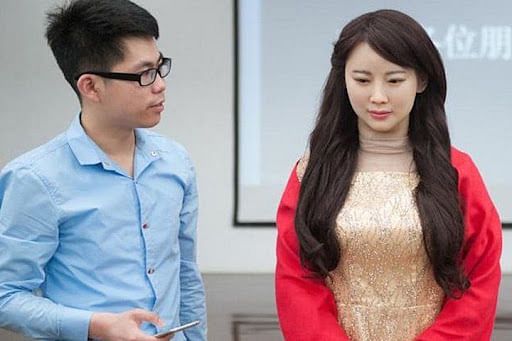
With her debut in 2016, Sophia is considered the most advanced android. Designed by a Hong Kong-based company Hanson Robotics, Sophia was created to look like Audrey Hepburn, a famous Hollywood actress because the creators' goal was to fit her as an old age companion in nursing homes or a crowd manager in events.
As world's first robot citizen, Sophia is the first robot innovation ambassador for the United Nations development program. The purpose of creating Sophia was to make a robot capable of gaining social skills. She has been embedded with neural networks and artificial intelligence to recognize human faces and understand their gestures and emotions. She can also interact with different people and also respond appropriately. Say hello to Sophia:
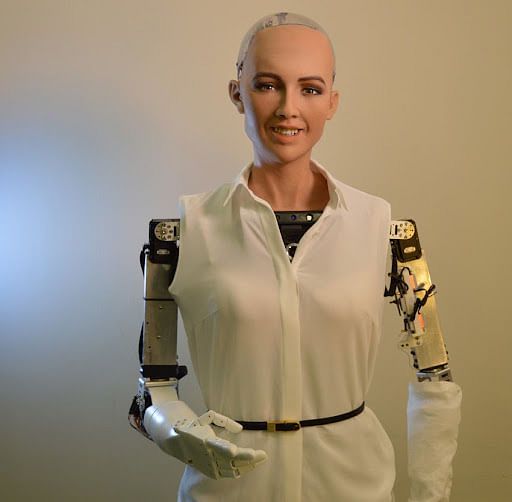
Presenting some android novels to read:
1. I, Robot by Isaac Asimov
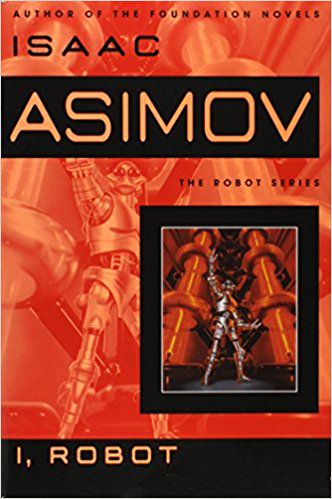
In this short-story collection, Isaac Asimov defines the laws of the robot and its behavior through three simple directives: a robot must protect humans, it must follow orders, and it must protect itself. In his signature blend of science fact and science fiction, Asimov chronicles the development of the robot in these interlinked stories; from its origins to its perfection in the not-so-distant future—a future in which humanity itself may be rendered obsolete.
2. Daemon by Daniel Suarez
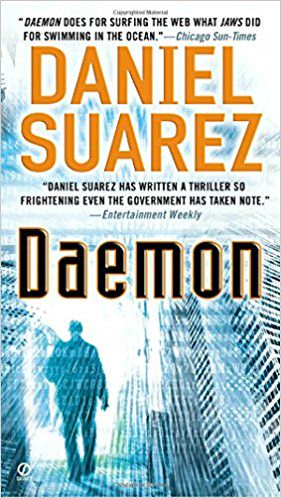
Daemons are computer programs that silently run in the background. They power almost every service, making the networked world possible—and vulnerable. In this New York Times bestselling high-tech thriller, a daemon activates after the obituary of a legendary computer game architect appears online, triggering a chain of events that begins to unravel the interconnected world. Still wondering how close we are to a world where we co-exist with robots? Entertainment Weekly called this novel "so frightening even the government has taken note."
3. Reboot by Amy Tintera

This YA fast-paced thriller is perfect for fans of The Hunger Games and Divergent. When Wren Connolly died, 178 minutes passed before she returned from death as a Reboot, a deadly crime-fighting robotic soldier. Tasked with training Callum 22, a Reboot who is practically still human and a liability, Wren is eventually ordered to eliminate him. To save Callum, Wren will have to risk it all.
4. We Can Build You by Philip K. Dick

If you're a fan of android fiction or sci-fi, then you've probably come across Philip K. Dick before. In this novel, Louis Rosen sells people—ingeniously designed, authentic robotic replicas of personages, such as Abraham Lincoln. His only buyer, though, is a shady businessman who may land Louis in jail. This story begs readers to ask the question: Is an electronic Lincoln any less alive than his creators?
5. The Stepford Wives by Ira Levin

Leaving readers with more questions than answers, this novel hints at aspects of android fiction, intertwined with secrets buried within a small and idyllic Connecticut neighborhood. When Joanna Eberhart moves to Stepford, she begins to suspect that the frighteningly submissive housewives next door may be robots created and controlled by their husbands. This masterpiece of psychological suspense and satirical commentary shows a darker side of a society based on youth and beauty, and what happens when one does not fall in line.
6. The Humanoids by Jack Williamson
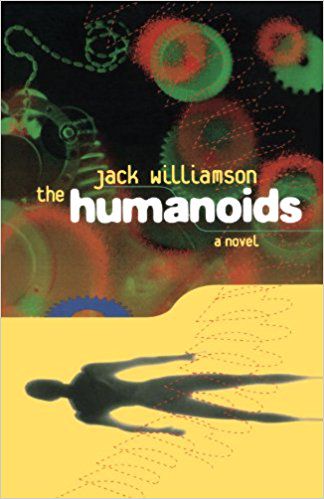
Considered another classic of the genre, this novels begins on the far planet of Wing IV, where a brilliant scientist has just created humanoids—sleek black androids programmed to serve humankind. Slowly, the humanoids begin to spread to other planets all over the galaxy, threatening to silence the human race entirely. Created as the perfect servant, will these androids live up to their purpose, or instead become the perfect masters?
7. Post-Human by David Simpson

Set in the future, tiny microscopic robots called nans have fused with humans, allowing you to repair any damage to your body and download upgrades like intelligence, muscle strength, and eyesight. Humans were supposed to live a better life, have anything they wanted with a simple thought, such as the ability to fly or live forever. However, when it is revealed that all other humans in the solar system have been gruesomely murdered, James Keates and his companions must discover what happened in order to avoid the same horrifying fate. This is the second book in the Post-Human series, so you may want to check out Sub-Huma
I searched on Wattpad for android stories and the ones I got were... well... let's just say--the less said, the better. If you've come across some, feel free drop them in the inlines or comment sections below.
And this is it. For now. I'll meet you in September with another interesting sub-genre. So, keep your eyes on the lookout.
Take care, stay safe and stay protected ❤️ Cheers, Nab =] /
Bạn đang đọc truyện trên: Truyen247.Pro